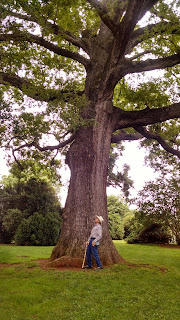Howdy Friends
Coffee Clutch and Facebook friends know what an influence
Peggy Cummings, her teachings and philosophies have been to me. She is
positively one of my heroes. So much in the equine world has been changed by
her dogged pursuit of understanding and teaching the importance of healthy,
correct movement of the horse. And human.
My mentor, Diane Sept introduced me to Peggy’s, “ConnectedRiding/Groundwork” nearly 20 years ago. Diane is a Senior Certified ConnectedRiding instructor, and under her tutelage I mastered many of Peggy’s
techniques. I even had the opportunity to work directly with Peggy at a few
clinics. Those techniques have had profound influences on me, and the horses
I’ve known over the years.
This week I had the honor of interviewing her and writing her
story which will appear in my column, “Holistic Hall of Fame,” in the
Jan/Feb/March issue of Natural Horse Magazine. (It’ll be a 2 PT, 2nd
PT will be April/May/June). Talking with Peggy as we relived her life’s journey
devoted to the betterment of horses proved emotional for me. An experience I’m
so incredibly grateful to have had the privilege to do.
I chose to title her story, “A Journey to unlock the WHY of
Horse Movement — Peggy Cummings,” because all through our discussions, and her
journey she asked, “Why.” As in this excerpt when she discussed King, a lesson
horse of her high school days. “King tended to float his trot which would scare
the students, rear at the canter, and he bit at the leaders. Not acceptable
lesson horse edict. Peggy realized there had to be a “why.” Why did King do
these things? King was the first horse to clearly tell Peggy, there is always a
why. She struggled to uncover the whys.”
From her first pony when Peggy was 9, she held a different
view than most about horse comfort, manner and behavior. She did not see
negatives as training or behavioral issues—rather she saw them as indications
of an underlying “why,” as in this excerpt, “She watched his stiff movement,
and subconsciously began again to seek the why. Why was moving gracefully so
difficult? What causes a horse to refuse to go forward, balk or protest? Peggy
knew there had to be a reason, a physical reason ... which then becomes an
attitudinal reason. She knew he was not being bad, he had a reason.”
The more Peggy learned, the more she uncovered the “Whys,” her
guiding principle here in this excerpt, “Over the next years teaching at summer
camp, Peggy began to notice many things. What made horses “happy” to work? What
caused them not to be willing? The horses at the camp had big jobs, and Peggy
understood they worked hard. How could she help them to remain willing, and not
sour of the confusion, demands and hard work? Beginning riders of all ages,
sizes, weights and personalities took a great toll on the horses’ bodies and minds.
Peggy saw this and worked to find ways to be, supportive of the horse. Horses,
she reasoned, should be happy, engaged, not shut down and plodding.”
In this excerpt the “Why” of our posture. “Peggy had long
recognized how sixty pounds of a stressed and rigid rider could cause one of
her horses to not move well. She also noticed another sixty pound, soft rider,
on the same horse would have a willing, soft horse. Why did a sixty pound rider
have such an impact on a thousand pound animal? What about an adult tipping
scales at 150 pounds or more?”
Peggy has devoted her life to finding answers to these and
countless whys, and created a unique, easy to learn, modality for addressing
them. Her work, struggles, persistence and devotion has changed lives for
countless people and their horses. She is a true pioneer in teaching the way
best to understand, and help our horses be happy, thriving and willing.
Thank you Peggy!
Watch for my complete story In Natural Horse Magazine— In
the meantime, for your horse’s sake, visit Peggy’s website www.connectedriding.com — Get in
touch with her, and be sure to purchase her latest book, “Connected with your horse from the Ground Up.” A must have for
horse caregivers, and I highly recommend it.
Gitty Up, Dutch Henry
P.S. To have a look at my book “It’s for the Horses: An
advocate’s musings of their needs, gifts, spirit and care,” please go to www.itsforthehorses.com .





